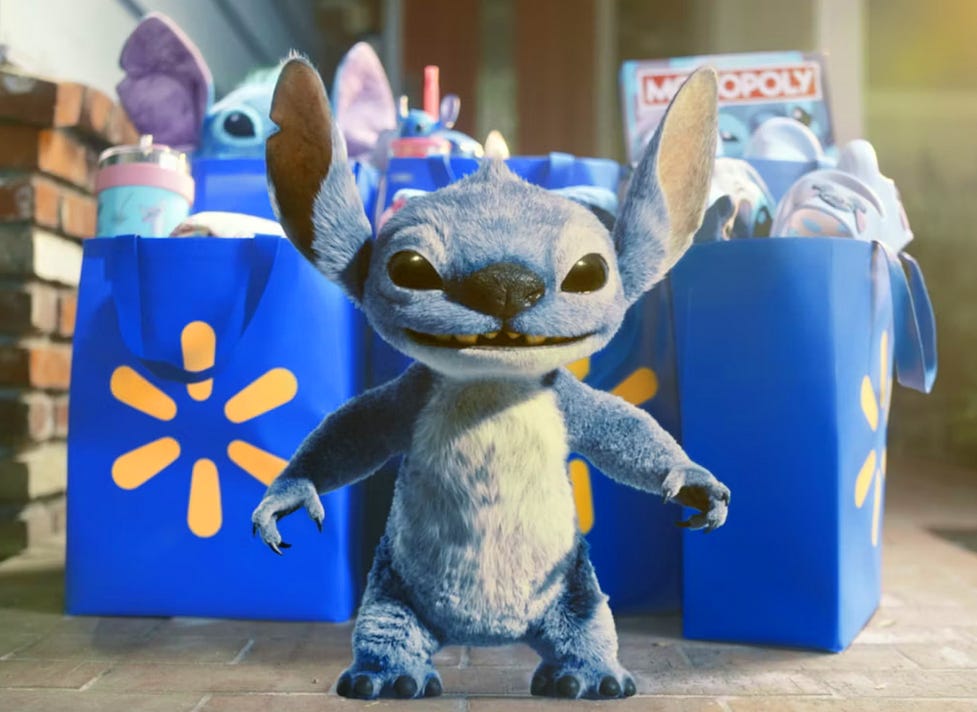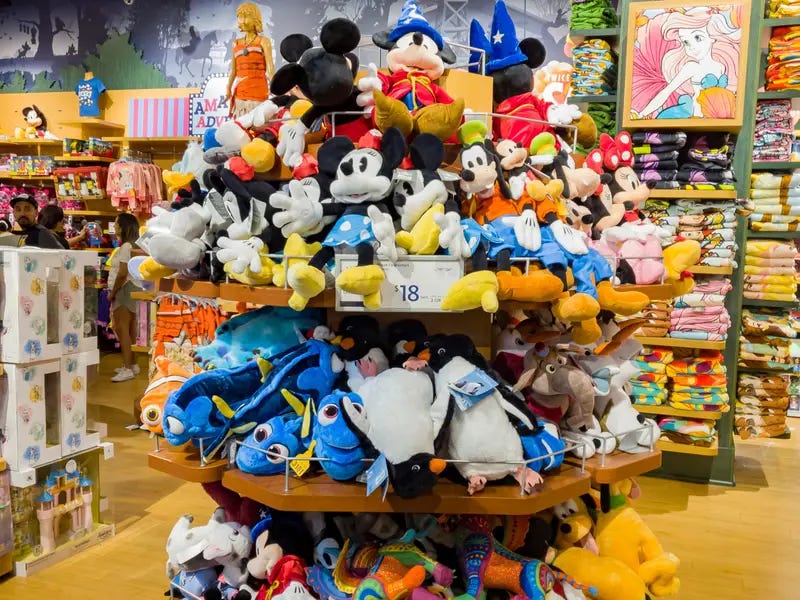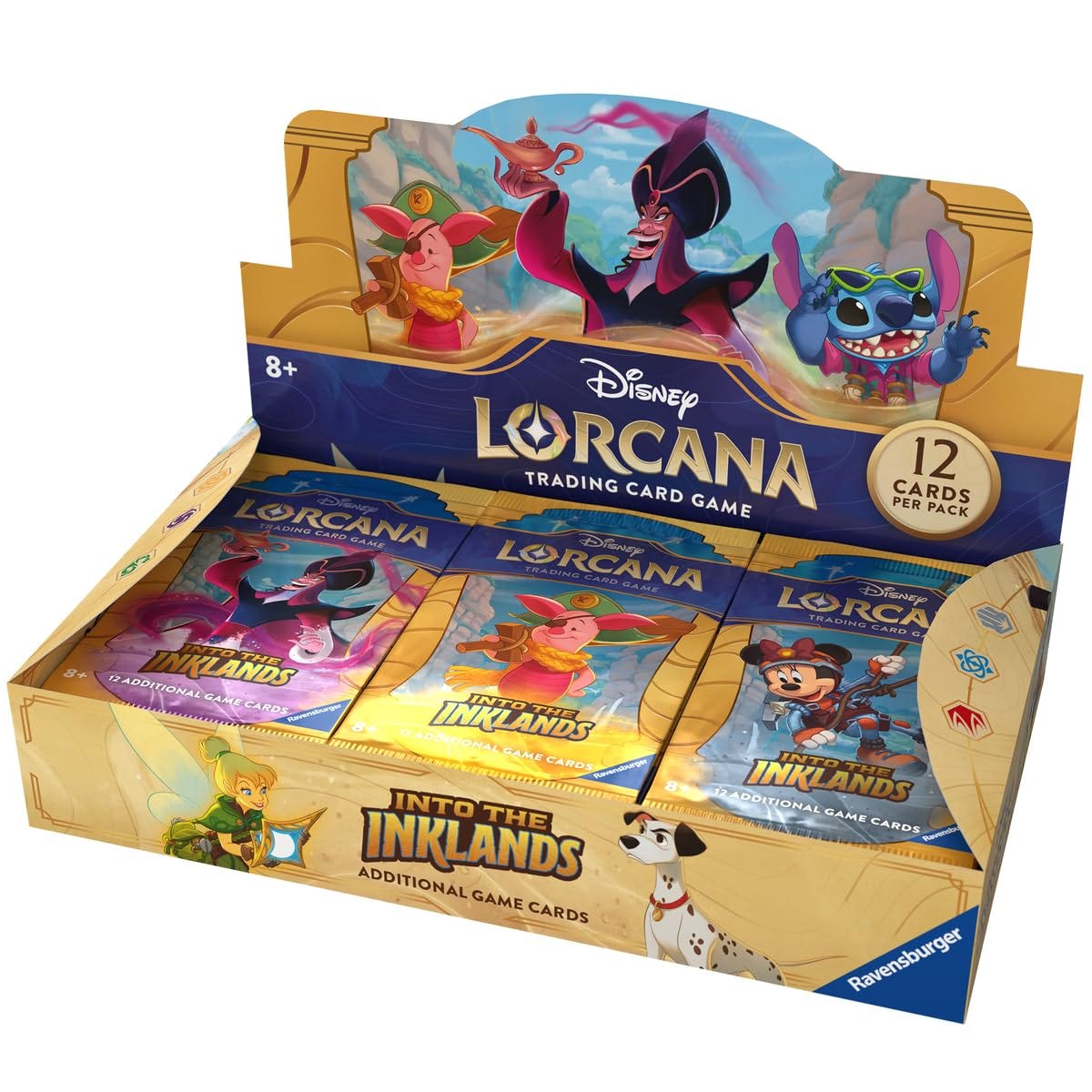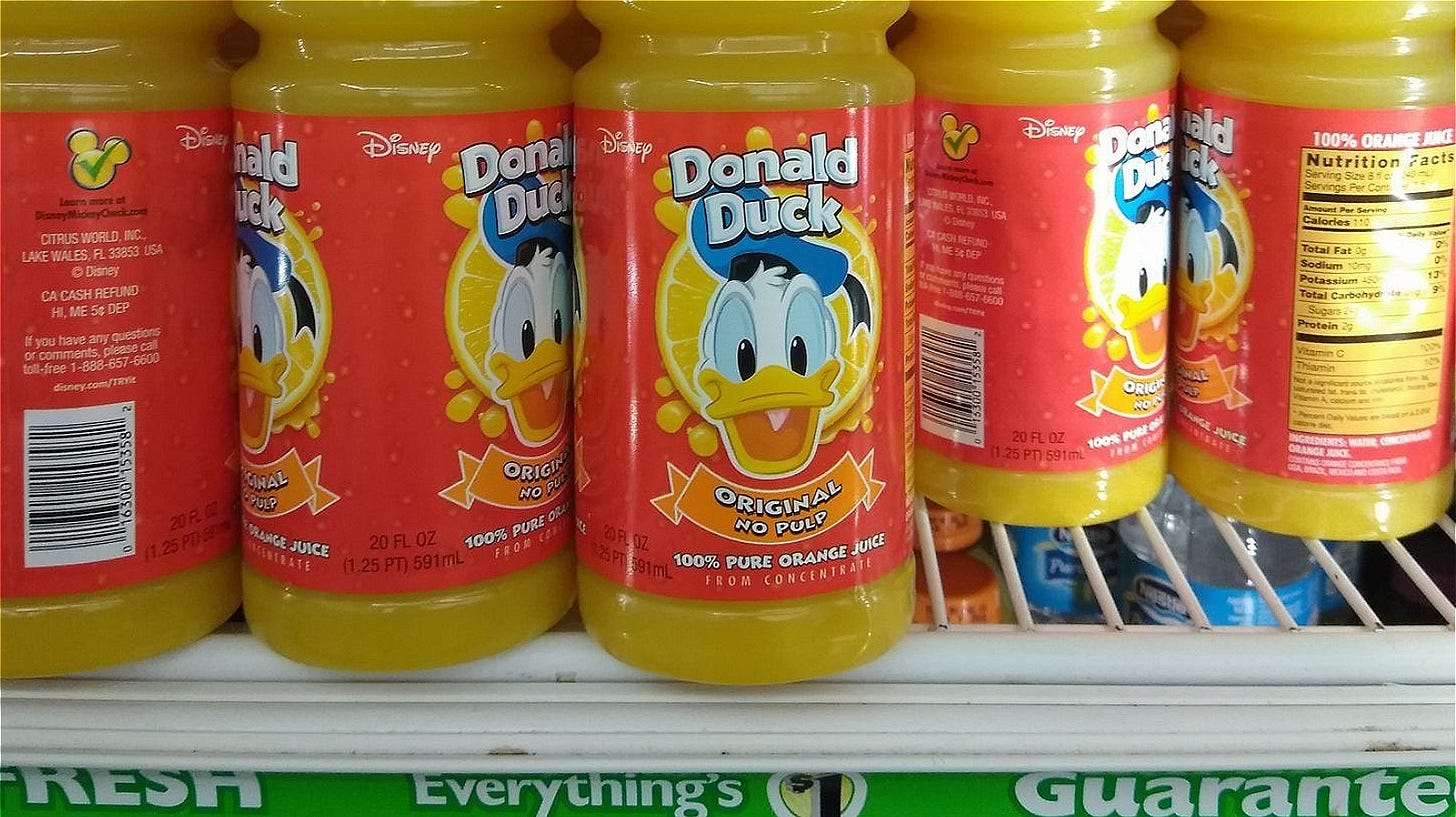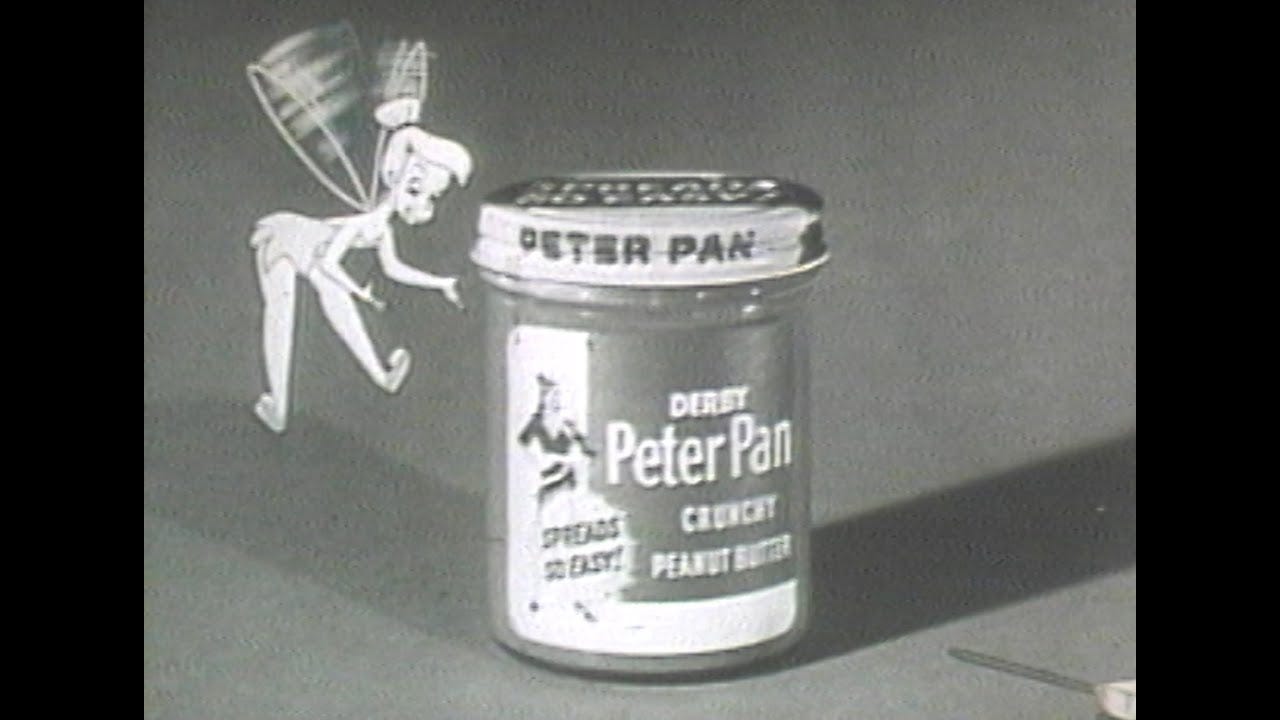Gen Z Helps Disney Hit $63 Billion in 2024 Merch Sales: Looking Back on a Century of Licensing Magic
Disney won’t go broke anytime soon. The Disney licensing empire dazzles with 2024 sales, merchandising magic, and a century of innovation.
The TL;DR...
$63 Billion Haul: Disney topped 2024 with $63 billion in licensed sales, owning 20% of the $307.9 billion global market.
Mickey’s Start: The licensing magic began in 1929 with Mickey Mouse tablets, growing to a $600,000 empire by 1934.
Quirky Classics: Donald Duck Orange Juice and Peter Pan Peanut Butter turned characters into nostalgic food favorites.
2024 Standouts: Lilo & Stitch ($2.6 billion), Star Wars, and Bluey led the charge, with a 14% profit jump in Q2 2025.
Future Shine: Gen Z (27% of 2025 sales) and integrated experiences keep Disney’s merchandising magic alive.
Disney might “go woke” but they likely won’t ever “go broke.” At least not anytime soon.
The Walt Disney Company has once again claimed the throne as the world’s top licensor, hauling in a magical $63 billion in retail sales of licensed consumer products in 2024, according to License Global’s 2025 Top Global Licensors report. That’s a whopping 20% of the $307.9 billion global licensed goods market, which jumped 10% from 2023—proof Disney’s merchandising wand still works wonders!
From Mickey Mouse watches to Lilo & Stitch apparel, this empire turns characters into a treasure chest of goodies. But how did it all start, and what about those quirky classics like Donald Duck Orange Juice and Peter Pan Peanut Butter? Let’s sail through a century of Disney’s licensing magic!
Disney’s knack for turning cartoons into cash is a tale as old as time, evolving with every generation. With millennials fueling 28% of 2024 sales and Gen Z poised to hit 27% in 2025, the Mouse House keeps the magic alive for all ages. Whether it’s a Star Wars lightsaber or a Bluey plushie, Disney’s merchandising mastery is a joyride worth exploring. Grab some popcorn, and let’s dive into this enchanted legacy!
How Did Disney Build Its Licensing Empire?
Disney’s merchandising adventure kicked off in 1928 with Mickey Mouse’s debut in Steamboat Willie, a cartoon that flipped animation on its head and sparked a licensing boom. By 1929, Walt Disney inked a modest $300 deal to slap Mickey on school writing tablets, laying the groundwork for Disney Consumer Products, officially formed in 1949. A shining early moment was the Mickey Mouse watch by the Waterbury Clock Company (later Ingersoll), which sold 11,000 units in a single day at Macy’s in 1933. This boost helped the struggling company weather the Great Depression, though it wasn’t a solo save. By 1934, Mickey merchandise raked in over $600,000 annually—about $13 million today—spanning toys, apparel, and more, cementing Disney’s early dominance.
The 1950s brought new horizons with Peter Pan (1953), where Tinker Bell joined the merchandising lineup, and Disneyland’s 1955 opening turned park souvenirs into a cash cow. Big moves like acquiring Marvel (2009) and Lucasfilm (2012) added Spider-Man and Star Wars to the mix, supercharging sales. In 2024, License Global highlights apparel as the top growth category (70% of brand owners see it as a 2025-26 opportunity), with toys and games (54%) and food and beverage (52%) close behind. Disney’s blend of timeless charm and Gen Z trends—think TikTok-fueled Bluey mania—keeps it reigning supreme after a century of savvy branding.
What Makes Donald Duck Orange Juice a Licensing Legend?
One of Disney’s quirkiest wins is Donald Duck Orange Juice, a breakfast delight that turned a grumpy duck into a kitchen staple. Launched in the early 1940s by Citrus World (now Florida’s Natural), it rode Donald’s wave of fame after The Wise Little Hen (1934). With Clarence Nash’s quacky voice starring in radio ads and Donald’s face on cans and bottles, it became a nostalgic treasure.
A 2006 Muppet Central forum post recalls a fan’s childhood thrill finding it at Demoulas’ Market Basket, a memory that echoes its cultural sway. Disney’s full ownership of Donald, unlike public domain characters, gave it licensing control, marking an early food and beverage triumph that still influences today’s market.
This juice wasn’t just a sip—it was Disney magic in every gulp, blending character charisma with everyday life. Its success hinted at the potential of food licensing, paving the way for later hits and showing how Disney could turn a duck’s tantrum into a retail triumph.
How Did Peter Pan Peanut Butter Join the Disney Magic?
Peter Pan Peanut Butter adds another delightful twist to Disney’s licensing tale. Debuting in 1928 under Swift & Company’s E.K. Pond subsidiary, it borrowed J.M. Barrie’s public domain Peter Pan, often portrayed by a female stage actor. After Disney’s 1953 Peter Pan film, a licensing deal brought the animated Peter and Tinker Bell into commercials and packaging.
In the 1950s, Tinker Bell shone in animated ads directed by Charles “Nick” Nichols, with narration by Sterling Holloway or Cliff Edwards, airing during ABC’s Disneyland TV series. These spots showed Tink pantomiming her love for the “p-nuttiest” peanut butter, a hit despite animator Bill Peet working on them as a “punishment” after a Sleeping Beauty spat with Walt.
By 2007, under Post Consumer Brands (post-ConAgra), Disney’s Peter Pan became a prominent figure on packaging, though a 2007 salmonella recall briefly stalled sales. This partnership showcases Disney’s knack for weaving public domain stories into branded magic, turning a peanut butter jar into a pop culture gem.
What Drove Disney’s $63 Billion Success in 2024?
Disney’s $63 billion in 2024 licensed sales left rivals Authentic Brands Group ($32 billion) and NBCUniversal ($17 billion) in the dust, per License Global. Stars like Lilo & Stitch ($2.6 billion, thanks to its live-action remake), Spider-Man, Star Wars, and breakout Bluey led the charge. The theme parks and consumer products division saw a 14% operating profit spike in Q2 2025, powered by Moana 2 and Inside Out 2. Yet, declining TV ad revenue and economic pressures push Disney to fuse theatrical, streaming, and retail worlds, with VP of marketing Patrick Cole touting “cohesive experiences” as the key.
This haul rides on diverse categories—apparel, toys, food and beverage—bolstered by nostalgia and “meaningful connections.” Millennials (28% of 2024 sales) and Gen Z (27% projected for 2025) keep the merchandise train rolling, proving Disney’s timeless appeal.
What’s Next for Disney’s Licensing Future?
Disney’s licensing future sparkles like a Tinker Bell glow, with Gen Z’s 27% sales projection for 2025 driving plans for integrated experiences. Expect Moana 2 apparel tied to streaming hits, plus Inside Out-themed lines tapping emotional storytelling. Classics like Mickey and new favorites like Bluey will keep the pipeline buzzing, despite economic bumps. Disney’s century of expertise ensures it stays the merchandising monarch.
Fans can relive this legacy on Disney+ with The Imagineering Story or snag the latest at DisneyStore.com, with 2025 promising more magical surprises.
Final Thoughts
Disney’s $63 billion licensing victory in 2024 is a fairy tale forged over a century, from Mickey’s first watch to Bluey’s plushie craze. Quirky stars like Donald Duck Orange Juice and Peter Pan Peanut Butter show how Disney turns characters into everyday magic, while blockbusters keep the coffers full. As the Mouse House tackles challenges with innovation and nostalgia, its legacy shines brighter than ever. What’s your favorite Disney merch moment? Share below, and let’s keep the magic alive!
Reported and Edited by Ivy Adams for Pirates & Princesses. Catch the Pirates & Princesses Podcast on Spotify and other platforms. Subscribe for the latest on Disney, merchandise, travel, and more!
Sources:
License Global: 2025 Top Global Licensors Report, via Variety
The Walt Disney Company History: Disney History
Muppet Central Forum: Donald Duck Orange Juice Discussion
Peter Pan Peanut Butter History: Peter Pan Peanut Butter History
Cartoon Research: Tinker Bell Peanut Butter Commercials
Scrooge McDuck Wikia: Peter Pan Peanut Butter Commercials
D23: Disney History
Hahn, D.: The Disney That Never Was (2007)
Donald Duck: The First Fifty Years (1984)


